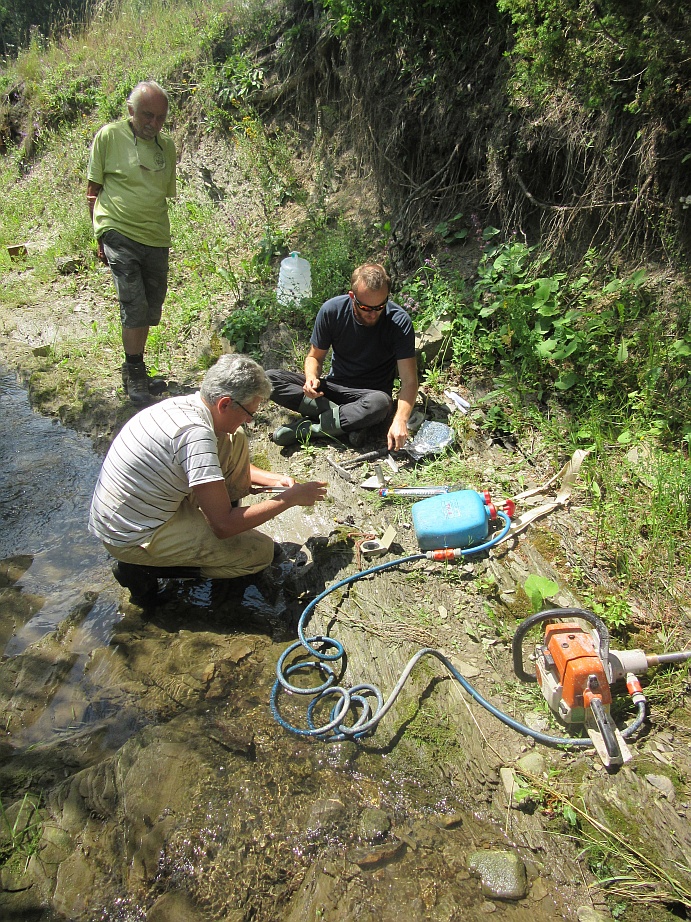Paleomagnetic research of the Central Western Carpathians
Written by : Jozef Madzin | Published in: Paleomagnetism |During the ongoing project APVV-0212-12 „TRANSFER“, a detailed structural research has been performed as well as more than three hundred individually drilled and oriented samples were taken from the Hronic Unit which forms the highest cover nappe system of the Central Western Carpathians. The paleomagnetic study involved Permian volcanic rocks of the Ipoltica Group from the Malé Karpaty Mts. and Nízke Tatry Mts. and Triassic carbonate sediments from the latter. Demagnetisation, standard paleomagnetic and anisotropy of magnetic susceptibility (AMS) measurements were carried out in three laboratories (Modra, Budapest and Warsaw).
For most localities statistically well-defined paleomagnetic directions were obtained which significantly differ from the local direction of the present Earth magnetic field, indicating long-term stability of the paleomagnetic signal. The general picture outlined by the tilt corrected paleomagnetic vectors is moderate to large clockwise (CW) rotation with respect to the present orientation.
The Permian localities exhibit much larger CW rotations in the western and eastern part of the study area than from the localities in-between. This can be attributed to differencial movements during nappe transport or post-emplacement disturbance. The possibility of complete remagnetisation can also not be excluded.
The younger Triassic localities yielding quite good results of moderate CW rotation represent only a limited area, so sampling of more geographically distributed localities are needed to prove their tectonic significance.

Paleomagnetic sampling of the Upper Eocene sediments of the
Central Carpathian Paleogene Basin at Kvacianka stream in Orava area.
During the summer 2016 we also sampled Upper Eocene sediments of the Central Carpathian Paleogene Basin (CCPB), at two localities in Liptov and Orava area, which directly cover the Hronic nappe system. The obtained paleomagnetic vectors, after tectonic corrections, exhibit large counterclockwise (CCW) rotations similar to the published paleomagnetic studies performed on the equivalent sediments of the CCPB from the Levoča Mts. and Podhale Basin in Poland.